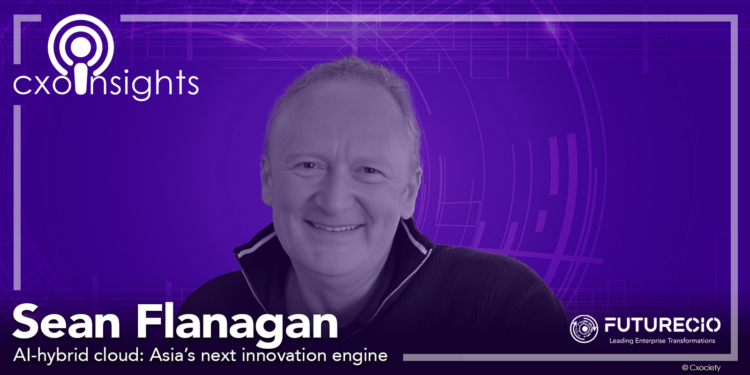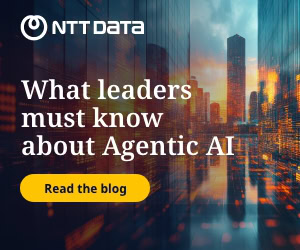Gartner predicts that 90% of organisations will adopt a hybrid cloud approach through 2027, and the most urgent GenAI challenge necessary to address over the next year will be data synchronization across the hybrid cloud environment.
Across Asia in 2025, the convergence of artificial intelligence (AI) and hybrid cloud is rapidly redefining the competitive landscape for enterprises. Insights from FutureCIO discussions with regional business leaders highlight a decisive shift:
Organisations are embracing AI integration, hybrid cloud adoption for flexibility and compliance, and edge computing for real-time data processing at the point where it is needed the most.
Sustainability and security have emerged as top priorities, with green cloud solutions and robust compliance frameworks forming the backbone of digital strategies.
Looking ahead to 2026, FutureCIO conference polls indicate that the convergence of AI and hybrid cloud will further accelerate digital transformation and innovation across industries. The anticipated rise of AI-powered hybrid cloud solutions, AI-as-a-service models, and cloud-native applications is set to reshape the way businesses operate.
Yet, legacy applications—especially in sectors like government and finance—are expected to remain in use both on-premises and on private cloud, coexisting with SaaS applications that run across multicloud environments. Gartner’s CIO agenda 2025: Key Insights for Southeast Asia reveals planned investments will increase by 33% as organisations modernise foundational systems.
These may undergo modernisation, but they will not be going away anytime soon, as evidenced by an IDC survey revealing that 67% of enterprises in the Asia-Pacific region place application modernisation as a top priority in 2025.
Why hybrid cloud and AI now?
Research from leading consultancies underscores this regional momentum. According to IDC, 67% of Asia-Pacific enterprises plan to increase investment in AI-driven hybrid cloud infrastructure by 2026, with the primary goals of improving agility, managing regulatory compliance, and supporting sustainability initiatives.
Gartner’s 2025 outlook for Asia-Pacific CIOs echoes this, noting that “hybrid cloud is no longer an option but a necessity for organisations seeking to balance innovation, risk, and operational efficiency”.
Sean Flanagan, worldwide IBM vice president for IBM Power and IBM Cloud Technical Sales, observes, “Business leaders are demanding CIOs modernise current infrastructure to take advantage of the promise of AI. At the same time, CIOs are asked to make sure new IT strategies support sustainable initiatives.”
He highlights that data centre sprawl and escalating power consumption are driving enterprises to seek more energy-efficient solutions.
“Energy-efficient systems become very, very important for these hyperscalers,” Flanagan notes, emphasising the dual imperative of performance and sustainability.
Accelerating innovation anywhere
The convergence of AI and hybrid cloud is not just a technology trend—it is a catalyst for business transformation. For Asian organisations, the ability to leverage AI across hybrid environments enables:
- Rapid scaling of digital services to meet fluctuating market demands.
- Enhanced compliance and data sovereignty are critical in markets with strict regulatory requirements.
- Real-time analytics and decision-making at the edge, supporting sectors from manufacturing to retail.
Flanagan explains, “There’s a need for acceleration and GPUs in the cloud as a dial-up service. Then there’s a need for accelerators like IBM Spyre Accelerator that we’re bringing to power this year.” He points out that such innovations allow organisations to scale compute resources efficiently, reducing both costs and energy consumption.
Modernisation without disruption
Despite the surge in cloud-native and SaaS solutions, legacy applications remain entrenched in many Asian enterprises. IDC estimates that up to 60% of applications in use today in Asia-Pacific are legacy systems. Flanagan acknowledges, “Legacy applications continue to be at the core of government and businesses in Asia.”
To address this, AI-driven tools like IBM watsonx Code Assistant are enabling organisations to modernise legacy codebases without risking business continuity. Flanagan shares a compelling example:

“A client’s best expert took six hours to fix a problem. With the IBM watsonx Code Assistant, a new person found the issue in 20 minutes.” Sean Flanagan
Such tools not only accelerate modernisation but also democratise access to complex legacy systems, empowering new talent to contribute effectively.
Sustainability and security: The twin pillars
Sustainability is now a board-level agenda in Asia, with organisations seeking to align digital transformation with environmental goals. Gartner notes that 87% of business leaders plan to increase their investment in sustainability in the coming years.
Flanagan highlights innovations like the IBM Power11’s energy scheduling, which allows organisations to “accept a 10% reduction in performance but a 30% reduction in power consumption.”
This flexibility is crucial as enterprises balance the growth of their AI infrastructure with their sustainability commitments.
Security, meanwhile, remains non-negotiable. As Flanagan recommends, “Making sure that you’re super secure is really, really important, but making sure that you’re protected. And how do you do that? Well, you do that with AI tools that automate the updates.”
The integration of AI-driven security and compliance solutions across hybrid environments is helping organisations in Asia minimise both planned and unplanned downtime—a critical requirement for sectors like banking and retail.
Flexible consumption and business agility
For many leaders in Asia (and around the world) 2025 is synonymous with market volatility as governments and industries react to uncertainty stemming from geopolitical activities in other parts of the world.
The Chinese proverb – a crisis is an opportunity riding a dangerous wind – offers hope for forward thinking leaders to take advantage of the turmoil to create new opportunities.
Flanagan illustrates this with the approach a retailer undertook following an acquisition:
“A retailer wanted to open 90 stores. Instead of taking two months, they used Power Virtual Server in the cloud and did it in 30 minutes.”
This agility is transforming how businesses scale and innovate across the region.
Recommendations for Asia’s leaders
As the pace of digital transformation accelerates, Flanagan advises, “Protect your data, but don’t move it either. Use tools that keep the data in situ for those underlying applications that you want to run.”
He points to new solutions like IBM watson x.data and Red Hat InstructLab, which enable organisations to create AI applications using data at source, ensuring both security and compliance.
Expectations suggest that the next wave of digital transformation in Asia will be defined by the ability to harness AI and hybrid cloud while safeguarding data, optimising costs, and advancing sustainability.
Click on the PodChats player to hear Flanagan discuss some of the discoveries IBM customers have achieved with IBM Power technologies.
- What are the key considerations for workload placement between on-premises data centres and hybrid cloud environments?
- How can we balance the growth of AI infrastructure with sustainability and energy efficiency goals?
- What strategies can we adopt to modernise legacy applications and maximise developer productivity using AI-driven tools?
- How do flexible consumption models, such as IBM Power Virtual Server, support business agility and cost control?
- How can businesses maximise the availability of their IT services? (resilient by design)
- Any final advice for CIOs and business leaders as they look to optimise their AI workloads on hybrid clouds?





